
monster of the week pdf
The “Monster of the Week” concept refers to a storytelling format where each episode features a unique, often supernatural antagonist. This episodic structure, popularized by shows like The X-Files and Supernatural, allows for diverse narratives and scares, keeping audiences engaged with fresh challenges weekly while balancing standalone and serialized storytelling.
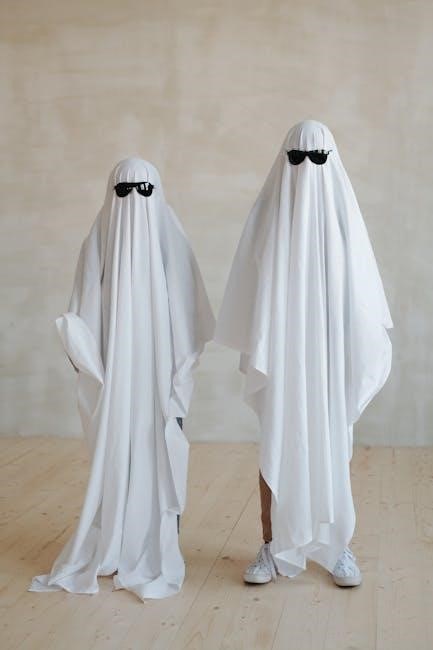
1.1 Definition and Origin of the Concept
The “Monster of the Week” concept refers to a narrative structure where each episode introduces a unique, often supernatural antagonist or challenge. Originating in early television, this format gained prominence in shows like The X-Files, where standalone episodes featured distinct monsters or mysteries. The concept allows for diverse storytelling, balancing episodic scares with overarching plotlines. Its roots trace back to serialized radio dramas and pulp fiction, evolving into a staple of modern media. This structure ensures fresh conflicts and resolutions weekly, captivating audiences with varied threats while maintaining series continuity. The “Monster of the Week” trope has since influenced numerous genres, from horror and sci-fi to video games, solidifying its place in pop culture history.
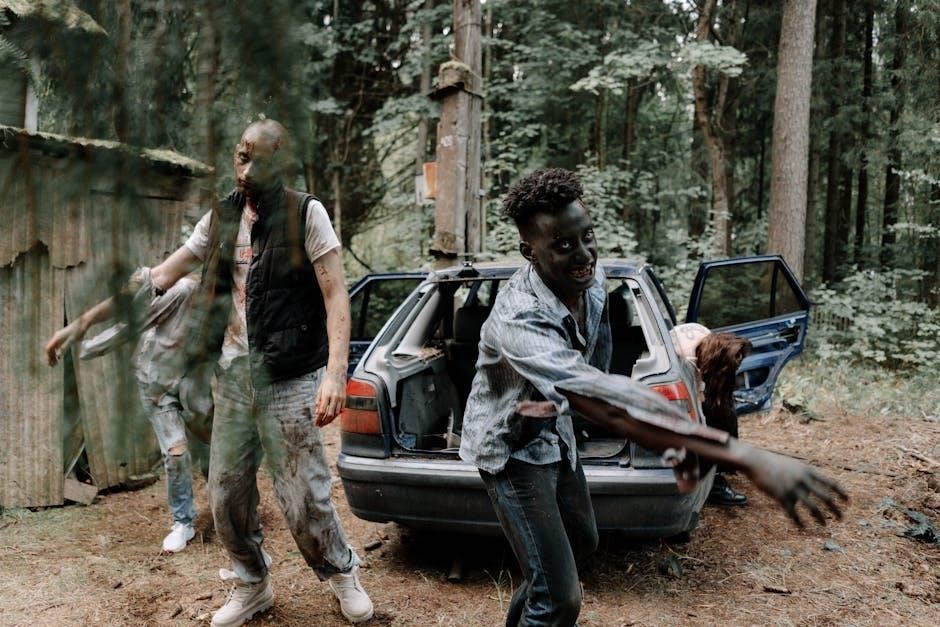
1.2 Evolution of the “Monster of the Week” Trope
The “Monster of the Week” trope has evolved significantly since its inception. Originating in early television, it gained momentum in the 1990s with The X-Files, which refined the format by blending standalone monster episodes with overarching mythology. This approach allowed shows to balance episodic scares with serialized storytelling. Over time, series like Supernatural embraced the trope, expanding it to include both creature-of-the-week episodes and season-long arcs. The format has also adapted to modern media, influencing video games and streaming platforms. Its versatility ensures fresh narratives while maintaining audience engagement. This evolution highlights the trope’s enduring appeal, as it continues to captivate audiences across genres and mediums, remaining a cornerstone of contemporary storytelling.

1.3 Popular Shows Associated with the Concept
Several iconic TV series have embraced the “Monster of the Week” format, cementing its place in pop culture. The X-Files is perhaps the most renowned, blending standalone monster episodes with its overarching conspiracy narrative. Supernatural also relied heavily on this trope, featuring a wide array of supernatural beings across its 16-season run. Other notable shows include Buffy the Vampire Slayer, which often mixed weekly monster battles with larger story arcs, and Grimm, where a descendant of Grimm brothers hunted supernatural creatures. Even modern series like Stranger Things incorporate elements of this format, blending episodic monster encounters with season-long mysteries. These shows have showcased the versatility and enduring appeal of the “Monster of the Week” concept.
1.4 Relevance of the Concept in Modern Media
The “Monster of the Week” concept remains highly relevant in modern media, offering audiences digestible, thrilling stories that don’t require long-term narrative commitment. Its adaptability across genres and platforms ensures its enduring appeal. Shows like Stranger Things and The Witcher incorporate this format, blending episodic monster encounters with overarching plots. The rise of streaming platforms has further popularized the concept, as viewers can easily engage with standalone episodes. Additionally, video games and podcasts have embraced this trope, creating weekly challenges or stories that keep audiences hooked. The concept’s ability to evoke nostalgia while innovating ensures its continued influence in contemporary storytelling, making it a timeless and versatile narrative device.
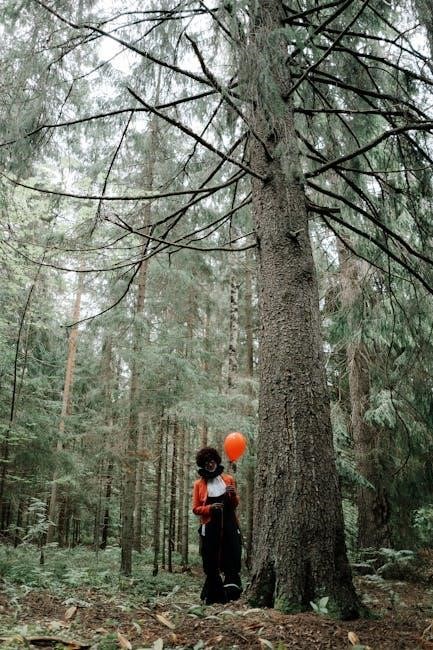
The X-Files and Its Monster-of-the-Week Episodes
The X-Files popularized the “Monster of the Week” concept, blending standalone episodes with overarching mythology. Premiering in 1993, it captivated audiences with its mix of eerie creatures and FBI investigations, defining modern television’s approach to episodic horror and suspense.
2.1 Iconic Monsters from The X-Files
The X-Files introduced a variety of iconic monsters that captivated audiences. The Flukeman, a parasitic worm-like creature, terrified viewers in Season 2. Tooms, a stretchy, liver-eating mutant, became a fan-favorite villain. The Black Oil, an alien virus, played a key role in the show’s mythology. Additionally, the Cigarette Smoking Man, though not a monster, was a mysterious, sinister figure central to the plot. Each monster brought unique scares and intrigue, contributing to the show’s success. These creatures often symbolized broader themes, making them memorable and impactful.
2.2 The Role of Mulder and Scully in Monster Episodes
FBI Agents Fox Mulder and Dana Scully were central to the “Monster of the Week” episodes, embodying contrasting perspectives. Mulder’s relentless belief in the paranormal often clashed with Scully’s scientific skepticism, creating a dynamic tension. Their partnership was crucial in uncovering the truth behind each monster, with Mulder’s intuition guiding investigations and Scully’s rationality grounding them. In episodes like “The Host,” Mulder’s obsession with the Flukeman highlighted his drive for answers, while Scully’s medical expertise proved vital. Their interplay humanized the supernatural, making the monsters more relatable. This balance of belief and doubt made their characters iconic and their interactions unforgettable, enriching the standalone episodes while deepening their relationship.
2.3 Fan-Favorite Standalone Episodes
Fans of “Monster of the Week” often cherish standalone episodes for their unique storytelling and memorable monsters. In The X-Files, episodes like “The Host” and “Clyde Bruckman’s Final Repose” are iconic. “The Host” introduced the eerie Flukeman, a parasitic monster, while “Clyde Bruckman” blended humor and horror, earning it widespread acclaim. These episodes showcased the series’ ability to balance terror with character-driven narratives, making them timeless favorites. Similarly, Supernatural fans often highlight episodes like “Tall Tales” for their comedic take on monsters. These standalone stories not only provided scares but also deepened the bond between the leads, Mulder and Scully or the Winchester brothers, ensuring the episodes remained etched in fans’ memories.
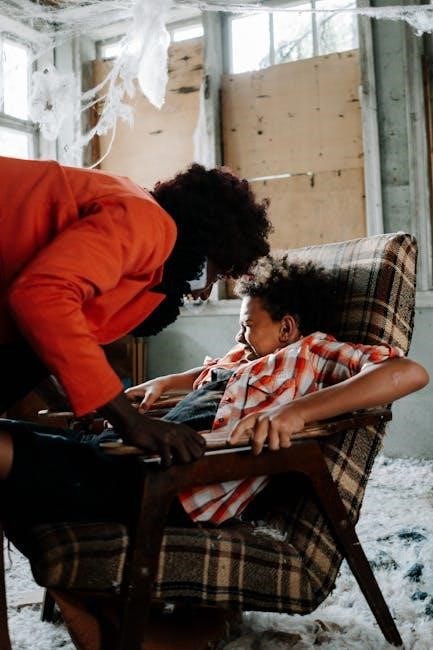
2.4 The Legacy of The X-Files in Pop Culture
The X-Files left an indelible mark on pop culture, inspiring countless TV shows, movies, and books. Its “Monster of the Week” format became a staple, influencing series like Stranger Things and The Walking Dead. The show’s blend of mystery, suspense, and science fiction redefined serialized storytelling, setting a new standard for genre television. Its iconic characters, Mulder and Scully, became cultural icons, symbolizing the pursuit of truth and skepticism. The series also sparked widespread fan engagement, creating a dedicated community that celebrated its intricate plots and memorable monsters. Even years after its conclusion, The X-Files remains a benchmark for compelling, thought-provoking entertainment, ensuring its legacy endures in modern media.
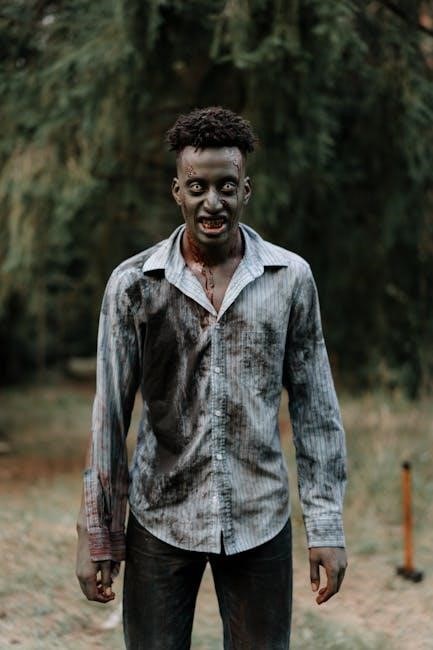
Supernatural and Its Monster-of-the-Week Format
Supernatural’s Monster-of-the-Week format follows the Winchester brothers as they battle various supernatural beings, blending standalone episodes with overarching mytharc, ensuring 16 seasons of engaging entertainment.
3.1 The Brothers’ Battles with Supernatural Beings
Sam and Dean Winchester face a plethora of supernatural entities weekly, from classic monsters like vampires and werewolves to more obscure folklore creatures. Their battles are intense and unpredictable, often requiring creative solutions and ancient lore. Each encounter showcases their bond, with Dean’s pragmatism contrasting Sam’s more empathetic approach. These standalone episodes provide a mix of horror and humor, allowing the brothers to grow while maintaining the show’s episodic charm. The variety of adversaries keeps the narrative fresh, ensuring that each Monster of the Week brings unique challenges and emotional depth to their journey.
3.2 Memorable Monsters from the Series
Supernatural features a wide array of memorable monsters that captivate audiences. The Hook Man, with his terrifying urban legend origins, and the Wendigo, a monstrous creature born from human cannibalism, are fan favorites. The Leviathans, ancient beings released from Purgatory, bring a unique threat with their adaptability and ruthlessness. Other standouts include the Shapeshifters, who blur the line between human and monster, and the Reapers, harbingers of death. Each creature is deeply rooted in folklore or mythology, adding depth to the series. These monsters not only drive the plot but also serve as metaphors for human fears and vulnerabilities, making them unforgettable in the world of Supernatural.
3.3 The Impact of Standalone Episodes on the Series’ Longevity
The “Monster of the Week” format played a crucial role in Supernatural’s longevity, allowing the show to span 16 seasons. Standalone episodes provided creative freedom, enabling writers to explore diverse supernatural entities and storylines without being constrained by a single, overarching narrative. This approach appealed to both casual viewers and die-hard fans, as each episode offered a fresh, self-contained story. The reset button at the end of each episode ensured that the brothers’ relationships and core dynamics remained consistent, maintaining emotional continuity. This balance between episodic and serialized storytelling kept the series dynamic, allowing it to evolve while staying true to its roots. The standalone format also made it easier for new viewers to join at any point, further broadening its appeal and ensuring its enduring popularity.
3.4 The Show’s Influence on Contemporary Television
Supernatural’s “Monster of the Week” format has significantly influenced contemporary television, inspiring many shows to adopt similar episodic structures. Its blend of horror, humor, and emotional depth has set a benchmark for balancing standalone episodes with overarching narratives. The show’s ability to reinvent itself while maintaining core themes has encouraged other series to experiment with genre fusion and serialized storytelling. Additionally, Supernatural’s loyal fan base has demonstrated the power of fostering a strong community, prompting creators to prioritize fan engagement. Its long-running success has proven that blending monster-of-the-week episodes with compelling character development can sustain a series for years, making it a model for modern television production and storytelling strategies. This influence continues to shape the way creators approach episodic and serialized content today.
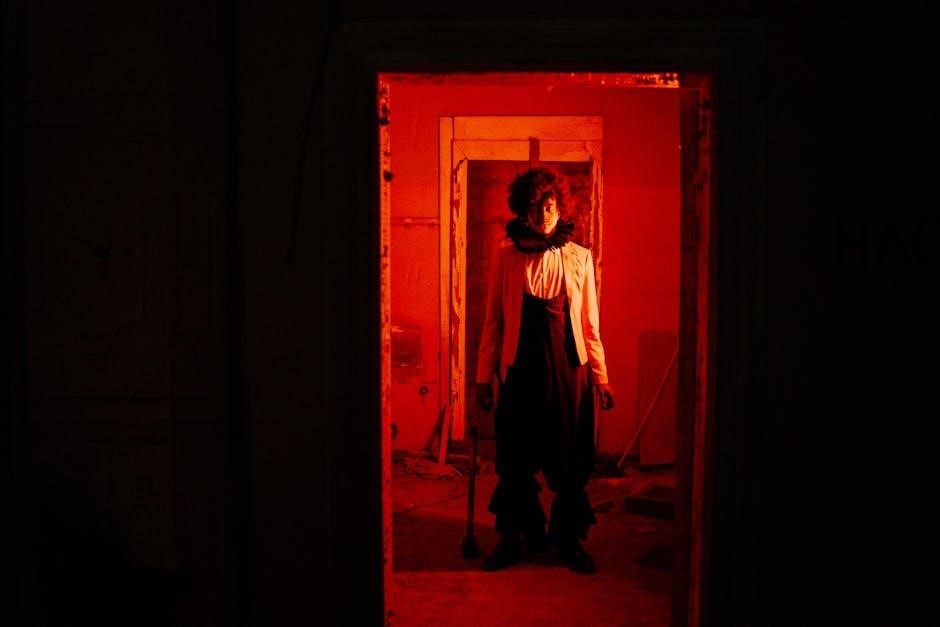
Monster of the Week in Video Games
The “Monster of the Week” concept in video games often features recurring or weekly challenges, such as unique enemies or bosses. This format enhances gameplay by introducing fresh adversaries, keeping players engaged with diverse strategies and designs, while also fostering community through shared experiences and discussions about each week’s monster, mirroring its success in television shows like The X-Files and Supernatural;
4.1 Iconic Video Game Monsters
Iconic video game monsters captivate players with their unique designs and roles in gameplay. From the relentless Nemesis in Resident Evil to the imposing bosses in Dark Souls, these creatures define challenges and evoke fear. Their memorable appearances and behaviors, such as the adaptive AI of Alien: Isolation’s Xenomorph or the eerie ambiance of Silent Hill’s Pyramid Head, leave lasting impressions. These monsters often symbolize central themes and enhance storytelling, making them integral to a game’s identity and player experience.
4.2 The Role of Monster Design in Gaming
Monster design in gaming is crucial for creating engaging and immersive experiences. It combines aesthetics, mechanics, and storytelling to evoke emotions like fear or curiosity. Effective designs ensure monsters are both visually striking and functionally integral to gameplay, often reflecting the game’s tone and theme. For example, the terrifying Nemesis in Resident Evil or the imposing bosses in Dark Souls are designed to challenge players while enhancing the narrative. Monster design also influences player behavior, guiding interactions and strategies. By balancing creativity with functionality, developers craft memorable adversaries that leave a lasting impact on players, making monster design a cornerstone of video game development.
4.3 How Monster of the Week Influences Game Development
The “Monster of the Week” concept significantly impacts game development by introducing fresh, episodic content that keeps players engaged. This approach encourages developers to create diverse, weekly challenges, fostering player anticipation and retention. Regular updates with new monsters or levels ensure the game remains dynamic, preventing monotony. Each monster’s unique design and abilities require distinct strategies, enriching gameplay. Narrative integration strengthens the game’s world-building, while community discussions around each week’s challenge enhance social engagement. However, maintaining this model demands substantial resources and balance to avoid overwhelming players. Overall, it drives innovation and sustains player interest, making it a valuable strategy in modern game design.
4.4 Player Engagement with Weekly Monster Challenges
Weekly monster challenges in games foster high player engagement by offering fresh, dynamic content that keeps the experience exciting and unpredictable. Each new monster introduces unique mechanics, requiring players to adapt strategies and experiment with different approaches. This episodic format creates anticipation, as players eagerly await the reveal of the next challenge. The limited-time nature of these challenges encourages regular participation, preventing the game from becoming stale. Community interaction thrives as players share tips and theories, enhancing the social aspect of gaming. Additionally, the rhythm of weekly updates helps maintain a consistent player base, ensuring ongoing interest and involvement in the game’s evolving narrative and gameplay. This model effectively sustains engagement and fosters a loyal community.

Cultural Impact of the Monster of the Week
The “Monster of the Week” trope has left a lasting legacy in pop culture, inspiring countless shows, fostering nostalgia, and shaping modern media storytelling with its episodic thrills and memorable creatures.
5.1 Fandom and Community Around Monster Episodes
Fans of “Monster of the Week” episodes have created vibrant communities, bonding over shared excitement for iconic creatures and standalone thrills. Shows like Supernatural and The X-Files fostered passionate fan bases, with enthusiasts crafting fan fiction, art, and cosplay inspired by their favorite monsters. The episodic format allows for diverse creatures, sparking endless debates and theories among viewers. Fans often gather online and at conventions, celebrating the unique blend of horror and storytelling. This collective enthusiasm has cemented the trope’s place in pop culture, creating a loyal audience that craves the weekly adrenaline rush of facing a new monster together.
5.2 The Role of Monster of the Week in Nostalgia
The “Monster of the Week” format evokes nostalgia by revisiting iconic creatures and standalone thrills from beloved shows like The X-Files and Supernatural. These series, which aired during the 1990s and early 2000s, became cultural phenomena, with fans reminiscing about their favorite episodes and monsters. The episodic structure allows for nostalgia to flourish, as each monster represents a unique memory and story. Fans often revisit these episodes, reliving the excitement and suspense of monster encounters. This nostalgia also bridges generations, as younger audiences discover these classic shows, creating a shared appreciation for the format. The “Monster of the Week” trope remains a timeless element of pop culture, fostering nostalgia and ensuring its enduring appeal.

5.3 How the Trope Reflects Societal Fears
The “Monster of the Week” trope often serves as a metaphor for societal fears, addressing anxieties through supernatural or sci-fi narratives. For instance, Cold War-era monsters symbolized fears of the unknown or foreign threats, while modern iterations reflect concerns like pandemics or technological dangers. The trope allows creators to explore complex issues in a fictional context, making them more digestible for audiences. By personifying societal anxieties, these monsters provide a lens to understand and process real-world concerns. This storytelling approach not only entertains but also fosters dialogue about pressing issues, making the “Monster of the Week” a powerful tool for social commentary and emotional resonance.
5.4 The Future of Monster of the Week in Media
The “Monster of the Week” trope is expected to thrive in modern media, evolving alongside technological advancements and shifting audience preferences. Streaming platforms offer new opportunities for episodic storytelling, allowing creators to blend standalone monster episodes with overarching narratives. The rise of interactive media, such as video games and immersive experiences, also provides fresh avenues for the trope. As societal fears continue to shift, the “Monster of the Week” will adapt, reflecting contemporary anxieties like climate change or technological ethical dilemmas. Its versatility ensures it remains a staple in entertainment, captivating audiences with both nostalgia and innovation. This timeless format will continue to entertain and resonate, solidifying its place in media’s future.